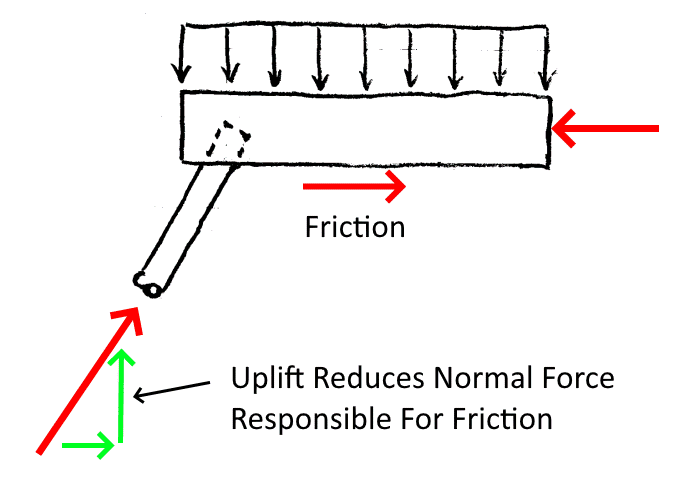Wandering Wallaby
Structural
Hello all, I'm designing a single family residential structure with a basement on potentially liquefiable soils. The geotech has recommended 4" diameter driven micro piles, and the use of battered piles for lateral resistance, but has also given a coefficient of friction to use for sliding resistance. I'm designing the walls as cantilevered retaining walls with a grade beam/footing spanning between piles (vertical piles under the wall and battered piles at the toe of the footing). I end up with about 3.3 kips/ft of sliding force at the soil interface, which I'm finding out is too much for a battered micro pile to resist, even at a 30 degree batter. The geotech recommends neglecting the upper 24" of soils for the passive resistance so that doesn't help much unless I use a very deep footing key. This is a daylight (walk-out) basement so relying solely on the slab resistance isn't enough.
Is it typical to use the coefficient of friction at the bottom of the footing in conjunction with a structure supported on piles? If so, the numbers work out for a stable design. However, I imagine that would not be recommended due to the grade beam spanning between piles and not necessarily exerting a normal force on the soil. Any advice or references would be greatly appreciated. Thanks in advance.
Is it typical to use the coefficient of friction at the bottom of the footing in conjunction with a structure supported on piles? If so, the numbers work out for a stable design. However, I imagine that would not be recommended due to the grade beam spanning between piles and not necessarily exerting a normal force on the soil. Any advice or references would be greatly appreciated. Thanks in advance.


